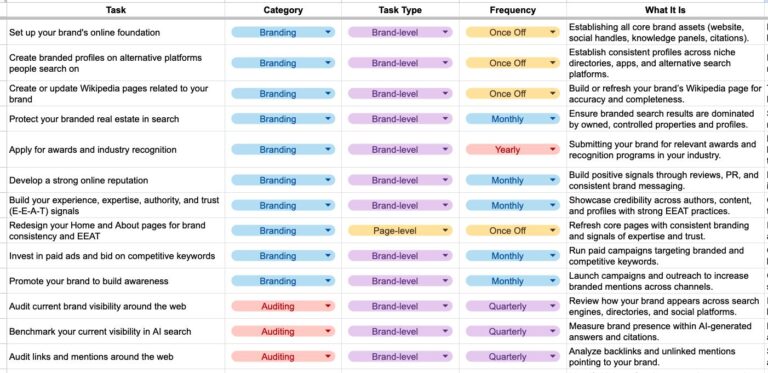Is your online business or website successful? Did your marketing campaign work? Is your ecommerce store growing? To answer questions like these, you need to understand the concept and know how to calculate the popular financial metric called return on investment (ROI).
As business owners, we want to know if our strategies are working and if the business is growing, and what we can do to sustain and accelerate that growth. Knowing how to calculate ROI and use it to make smart decisions is critical to answering these questions.
From the perspective of a business, ROI generally relates to one of two possible scenarios.
If you’re trying to determine the financial health and status of your overall business, calculating ROI will provide one of your most valuable pieces of information. It shows you how your net profits and revenues are stacking up against your losses, expenses, and particular investment costs.
The other scenario where ROI is helpful is with regards to marketing. When trying to determine how well your various marketing strategies and campaigns are working, you’ll want to calculate ROI to help answer that question.

The most traditional ROI formula simply involves subtracting expenses from revenues, dividing by expenses, and calculating the percentage. In various formulas, expenses can also be labeled as total cost, investments, or various other terms. For the simple formula, it’s all the same thing.
(Revenues – Expenses) / Expenses x 100% = ROI
For a simple example, if your online business generated $100,000 in revenue and you had $30,000 in investment costs, you would subtract those and then divide by $30k. 100k minus 30k equals 70k. 70k divided by 30k equals a 233% ROI.
For a marketing example, suppose you spend $3500 on an omnichannel marketing campaign placing ads on social media and Google, all leading to a landing page on your ecommerce site that offers a special deal on one of your products.
Suppose your campaign generates $5000 in revenue. Using the same simple ROI calculation, you end up with ($5000 – $3500) / $3500 x 100% = 42.8% ROI.
Is that good? In one sense, any positive ROI is good, and certainly better than a negative ROI.
But as you’ll see later, there are numerous strategies you can use to boost your ROI and thus increase your business investment’s profitability.
In simple terms, return on investment is pretty easy to understand. What did you make? And how does it compare with what you spent? Net profits. That’s it.
But in reality, as often seems to be the case, calculating ROI can be more complicated. Here are a few complicating factors that make the ROI metric a bit harder to determine in some situations.
Time horizon
For a limited time marketing campaign, investment return is less complicated. But what about marketing that goes on forever?
For example, what about sending a monthly newsletter? What about blog posts and other forms of content marketing? These types of evergreen marketing, once produced, just keep going, and they have a cumulative effect on the ability of your business to attract and convert leads.
If your website gets high rankings for numerous search terms, you earned that reputation over many years through devoted attention to search engine optimization (SEO). So if a random shopper finds your website near the top of their search results, that shopper’s purchases can’t be credited just to the one web page they happened to see and click on. That page showed up because of years of SEO work.
How do you quantify that investment’s potential value? It’s not easy.
And what about recurring payments, like in a membership situation? What about repeat customers?
How far into the future you “count” the profits generated from one sale, compared to the investment it took to produce that revenue, isn’t always going to be so straightforward.
Accurately accounting for all costs
Even simple investment costs aren’t so simple the more you think about.
Suppose you create an email campaign. Six emails, sent out over two weeks, all selling the same deal that expires at the end of the two weeks. So, you add up the initial investment for writing the emails, compare that to the revenue generated, and you have your net income and ROI, right?
Well…
Are you including any graphics produced on behalf of the campaign, or just the copy? Are you factoring in the time spent by your employees — every person who had a role in making this campaign happen? How about the monthly cost of your email marketing platform? And what about the cost of making the product or products being offered in the deal? How about shipping and fulfillment?
The more you think about it, the more costs and expenses you realize play a role in making a campaign work. But most of those costs also apply to many other things your business does. So how much profit, and what percentage of each expense, should you attribute to the different investments associated with each campaign?
This is why most businesses just use the simple ROI formula. But it’s important to remember that there are other investments and costs associated with every campaign, and you will pay them out of any revenue you generate.

Accurately attributing the sources of the return
Just like costs can be complicated, so can the source of the net income produced.
Let’s say a prospect goes through this process in their relationship with your business. They:
- See an online ad, but don’t click.
- See another online ad and click and look around. They don’t buy, but do follow you on social media.
- See a social media post and like it.
- See another social post then click a link to join your email list.
- Receive the email welcome series, but don’t buy.
- Click on two blog posts promoted via email.
- Watch a video promoted in another email.
- Join your SMS list.
- Click on an SMS campaign after also seeing an email for the same campaign, but don’t buy.
- See an online ad, click on it, and make a purchase.
Now — to which part or parts of this process should you attribute the revenue from their purchase?
Under the simplest approach, the final online ad that led to the actual purchase gets all the credit. So for whatever different investments went into that online ad campaign, this customer counts as a conversion, and the revenue they generated factors into the ROI calculations for that online ad campaign.
But the reality is, if this person hadn’t seen and engaged with all the previous online ads, emails, texts, posts, and content, and been nurtured and drawn into your sphere of influence over that time, they probably wouldn’t have responded to the final online ad that motivated a purchase.
All the marketing and nurturing that came before played a role in their decision to buy.
This is the concept of attribution, and there’s a whole field devoted to it, which we don’t have time to explore here. For now, the point is simply this — giving credit for the success of a campaign isn’t as simple as just looking at that one campaign.
All your marketing, not to mention your customer service, online reviews, testimonials, and other efforts, play a role in customers buying from you.
And that’s why all ROI calculations need to be viewed as only partially accurate.
Overlapping investments
Lots of marketing investments are used for more than one single thing.
For a simple example, imagine your graphic artist creates a series of digital assets to use in your holiday marketing campaign. One person created all those assets, and that process has a fixed cost. But those marketing assets can now be used in emails, on web pages, in social media posts, in digital ads, and even in print marketing.

For a multi-channel campaign like this, it will be difficult to figure out what percentage of the total cost of these graphics to apply to each channel if you wanted to determine the ROI for each one.
Recurring payments
Revenue doesn’t always happen in single payments.
Imagine your business has a recurring membership program, or operates its primary revenue model as a subscription. Every month, the customer pays $20.
If you run a marketing campaign that attracts 50 new paying customers, how do you determine the return on investment if the returns could, from some customers, continue coming in for years? How much profit goes into the formula when the investment returns from that campaign increase every month?
With net profits constantly growing, the ROI calculation would be constantly changing.
Revenue vs profits
Revenue is simple. Profits are complicated.
If you just think in terms of revenue, your ROI calculations will be easier. If you try to incorporate net profits, you now have to consider all the various operating expenses that take away from the revenue. This even includes things like taxes, fees, shipping, and other associated costs related to making a sale.
To incorporate a few of these variables in your ROI calculations, another formula has been developed that will give you a slightly more accurate ROI metric. And there are other formulas besides this one too, which is one reason you should be wary of comparing your ROI figures with those of other businesses.
Here’s a marketing ROI formula:
(Leads x conversion rate x average sales price – costs) / costs = ROI
Here, you’re considering more than just revenue before subtracting investment costs.
For example, let’s say you run an email marketing campaign offering 25% off when customers spend over $100. Here are the results:
- 500 people click at least one of the emails in the campaign.
- 150 of those people make a purchase.
- The average order value for that campaign — after the discount — is $97.
- The emails and other investment costs are estimated at $2,500.
With this data, the conversion rate would be 150/500, which is 0.3, or 30%.
Using the formula, you have 500 x 0.3 x 97, which is $14,550. Subtract the $2,500 from that, and then divide by $2,500. Multiplying by 100% gives you a 482% return on investment.
Adjust it for recurring revenue situations
If you have a membership model, you can adjust this formula by substituting average sales price with average customer lifetime value.
In other words, you should be able to determine the average length of time your customers continue paying your monthly fee. Let’s say your average customer subscribes for ten months, and you charge $20 per month. That makes the average sales price number equal to $200. You can use that in the ROI calculation, and now you’ve removed the complication about recurring revenue.
Sometimes, an investment’s profitability doesn’t show up in the form of immediate dollars. This was hinted at earlier in the section about complications, but it’s worth a deeper look.
Business growth comes from many sources besides just net income. For example, getting more leads and prospects helps grow a business. Those leads will not all convert into paying customers, but if you have 1,000 leads, that’s a much healthier situation than if you have just twenty leads.
With this line of thinking, here are a few other concepts to help broaden your thinking around return on investment.
Cost per lead
For certain marketing situations, the goal isn’t revenue, but leads. So, you don’t measure that campaign’s success using the ROI formulas from earlier. You know what your leads are worth if you know your lead conversion rates and your average lifetime value.
So the question here is, how much investment can you justify spending to acquire leads?
Suppose you run a series of social media ads, and the call to action is to join a webinar. Then, 30% of the people who sign up for the webinar actually view it. Those are leads.

If the ad campaign cost $5000, and the webinar cost $2,000 to produce, you spent $7,000 to acquire these leads. If 100 people watched the webinar, you spent $70 per lead.
Is that good? Well, it all depends on how much each customer is worth. If you sell a high-value service and a typical customer spends over $1000 with you, then converting even ten of those leads into paying customers makes the campaign worth it.
So calculating cost per lead is a form of return on investment, if you know the end value of the initial investment.
Cost per acquisition
In a similar way, calculating cost per acquisition is also a form of return on investment. Off the previous example, the ten converted leads are now newly acquired customers. In that example, you used a $7,000 investment to acquire ten customers. So the cost per acquisition is $700 per customer.
And again, if these customers spend over $1,000 each, then you’ll have a positive ROI.
Cost per acquisition matters because it’s something you have more control over than just investment returns. In other words, if you can lower your cost per lead and cost per acquisition but preserve the same conversion rates, your investment’s net profit will increase.
We’ll talk more about ways to increase ROI a bit later.
Lifetime value
As already mentioned, knowing your average customer lifetime value is immensely helpful, especially if you want to calculate ROI expectations before you begin a campaign. In other words, if you know what a customer is worth, you can project the ROI before it happens.
This also has the advantage of eliminating the time horizon problem from your ROI calculations.
For example, suppose a typical customer spends $500 over their lifetime with your company. You can get that figure if you have been around long enough and have many years of customer data. If your company is brand new, you won’t have enough information to know this figure, but there are ways to project it.
To calculate lifetime value, the simplest way is to add up the total revenue for as many years as you have quality data, and then divide by the number of individual customers from that time period.
Lifetime value = total revenue / # of customers
Now, this method has some problems depending on the business. If you’ve changed your products or services a lot, then old data won’t apply to your current business. Likewise, if customers have changed their behaviors and preferences, or the industry you’re in has changed in significant ways, then again, old data will be less relevant.
There are several other ways to calculate lifetime value if you want to explore them.
Let’s suppose your typical customer spends $500 over their lifetime. If your marketing investment generated 100 new customers last month, you can project the value of those customers to be $50,000, and can use that to calculate return on investment for that campaign.
Besides just having the satisfaction of knowing how well you’re doing in terms of net present value, calculating ROI offers a number of other benefits and ways it will help the business owner.
It the makes business attractive to investors
If you’re trying to attract investors, partners, or joint venture deals for your business, showing your return on investment metrics can help a lot — if you have good data, of course.
ROI data shows that you’re not all talk. You really are making money, and you have the track record of net profits and cash flows to prove it. Partners and investors seeking new investment opportunities like to have at least some degree of confidence in businesses they work with. Use ROI calculations to make yours seem like more of a sure bet.
It shows effectiveness of marketing strategies
Brand marketing, in general, is harder to measure. Marketing that includes things like calls to action, deadlines, coupon codes, trackable links, dedicated landing pages, and other unique features makes it easier to calculate return on investment.
And when you know how well your various marketing tactics are working, you can do more of what’s working, and less of what isn’t. You can make smarter business and marketing investment decisions.
Does it really work to sponsor a local sports team and get your logo on a banner next to a dozen others? If it does, how would you know? You can’t calculate the investment’s net profit for that type of marketing. For trackable marketing, you can, and then you’ll be able to continually improve and refine it to get even better results and increase your profitability ratios.

It reveals effects of costs on profits and growth
If you track your average ROI figures for a good length of time, you’ll begin to observe other trends and factors that may be cutting into your net profits.
Why?
Because costs, expenses, and other investments are part of the ROI calculation. If you want to improve your investment returns, your previous figures will show you how much the various costs associated with running the business are holding you back.
For example, try this exercise. Look at your ROI calculations, and reduce all the costs by 10%. How much does the ROI improve? Then, imagine turning that into a reality. Can you reduce costs by 10% and still generate the same amount of revenue?
We’ll talk more in a moment about how to improve your return on investment.
Return on investment is a helpful metric, but it’s important to be aware of its shortcomings.
Complications
First, we’ve already discussed some of the complications associated with getting accurate figures. If you determine these complications really matter for your business and you’re having a hard time incorporating them into the math, you might find your ROI data a little less helpful.
Volume and statistics
Second, volume matters.
Suppose you run a campaign and generate a 1,500% investment return. Sounds great right? Well, the details matter. Suppose that campaign involved making a small one-time live presentation to some local group that meets once a year, and you made three sales. But since your investment costs were almost non-existent, the percentage ROI looks huge.

In other words, data can look better than it really is if you have too small of a sample size. And, if the campaign can’t be replicated for some reason, the data doesn’t help you make future investment decisions. It doesn’t mean you shouldn’t calculate ROI for those situations, but that 1,500% figure doesn’t really reflect the value of the actual net income, in that example.
Dollars, not percentages
Actual dollars matter more than percentages. You grow a business with dollars.
A 20% ROI that represents a million dollars in net profit is better than a 50% ROI that represents a thousand dollars in net profit. This can easily happen, because some marketing strategies and campaigns take place on a much larger scale than others.
So pay attention to actual profit generated, not just percentages of return.
For example, if you have a PPC campaign that’s working on a global scale, generating six or seven figures of revenue each year, but with only a 10% ROI because PPC is expensive, don’t abandon it just because you tried a new investment that produced a 30% ROI.
Profit vs revenue
For the most part in this article, we’ve talked about generating positive ROI in terms of gross revenue. It must be stated, however, that you’ll also need to take into account other expenses related to servicing the sales or business generated.
So, if you spend $6,000 on a marketing campaign and generate $8,000 in sales, that’s great. But if your cost of goods sold for that $8,000 in sales is $2,000, you’ve merely broken even. And that’s before you factor in all of the other costs of running a business.
As you’ve seen, there are several ways to think about return on investment. You can drill down and get very specific and calculate ROI for specific marketing campaigns or even just steps in the campaign.
And, you can calculate ROI for your whole business, in regular time periods. And there is more you can do between these two extremes.
So when we talk about how to improve your ROI and become more profitable, some of the ideas discussed below apply to different points along this spectrum. Try to pick out the strategies that address your most pressing needs and focus on those first.
Keep doing what’s working
When you calculate ROI for your various marketing efforts, you should find a variety of results. Take the strategies that are working well, and keep doing them.
It’s so easy to fall into the trap of thinking you have to keep coming up with new ideas. But if something is working, there’s no reason to stress out trying to reinvent the wheel, as the saying goes.
Just be sure to continue calculating ROI with each new campaign, because it is also possible for something that used to work to go stale, and this can happen for a variety of reasons.
Improve on effective strategies
In addition to continuing to do what’s working, look for ways to do it even better.
Did your holiday email campaign produce a 25% return on your initial investment last year? How can you improve it this year to get 30%?
Stop doing what doesn’t work
The flip side of all this is to stop spending marketing dollars on strategies that consistently fail. This doesn’t mean you should give up after one attempt. Sometimes it takes a few tries to make something work. But if what you’re doing just keeps failing and you’ve tried numerous approaches to make it work, there’s no reason to keep losing money.
By tracking return on investment for everything you’re doing, you’ll know what’s not working and will be able to make more strategic investment decisions.
Run campaigns that are time-limited
It’s easier to calculate ROI when you run time-limited campaigns. When paying for digital advertising campaigns or social media ads, this is easy to do because you can set how long your ads will run or limit the amount you’re spending. When time is up, or when all the ad dollars are spent, the campaign ends.
This is good, because as long as you’re tracking your results, you’ll have a fixed set of data from which to calculate ROI. You’ll know what you spent, and you’ll know your returns. Just remember, returns can include things like new leads, new subscribers, or other non-monetary assets in addition to actual sales.
Make everything measurable
The more aspects of your business you can measure, the easier it will be to calculate and track your ROI more broadly. When it’s measurable, you have more information that will enable you to make smarter business and marketing investment decisions.
This may be the single best thing a business owner can do in response to this post. If you don’t have enough trackable data to calculate return on investment, then your first task is to implement more tracking.

We’ve already mentioned a number of these strategies that can make attribution easier:
- Use trackable URLs in your ads and posts.
- Create dedicated landing pages.
- Offer coupon codes.
- Share unique offers only in certain places.
When you implement strategies like these, you know where your revenue is coming from, and you can more easily calculate the ROI of what you’re doing.
Increase average order value
Thinking now about the actual ROI calculation, one thing to focus on if you want to increase the return on an initial investment is to increase revenue. More revenue with unchanging costs means higher net income. It’s that simple.
One great way to make more revenue is to increase average order value. Here are a few ways to do that:
- Offer special deals for shoppers who spend over a certain amount.
- Bundle products together in packaged deals.
- Give free or reduced shipping for orders over a certain size.
- Feature suggested products and “people also buy” on your checkout page.
- Use one-time offers on your thank you pages.
- Use upsells and cross-sells.
- Offer deals like Buy One Get One free (BOGO) or buy two get one free.
- Offer free gifts with higher value purchases.
- Use Buy Now, Pay Later so customers don’t have to pay all at once.
These sorts of strategies will increase average order size, and thus will increase your overall net income as well as the return on investment from whatever specific marketing tactics are bringing people to your website or ecommerce store.

Raise prices
Imagine raising all your prices by just 2%. Or raising the prices of certain items by 5%. If nothing else changes, and if you still make the same volume of sales, or even a tad less, you’ll make more money while keeping your investment costs unchanged.
Now, you have to be careful with this, because if you have a lot of repeat customers, they may notice the changes. If they don’t like the changes and don’t find the higher prices worth it, they might take their business elsewhere. Pay attention to what your competition is doing.
But the math for raising prices allows a certain number of lost customers. Consider this:
- When 100 customers spend $50 per order, they generate $5,000 in revenue.
- When 90 customers spend $60 per order, they generate $5,400 in revenue.
Notice how losing ten customers made no difference, and more revenue was generated simply by getting each customer to spend more. If you can achieve this kind of result by simply raising your prices a reasonable amount, you can immediately improve your return on investment, across the board.
Cut expenses
The other side of the ROI calculation is the costs. If you can reduce your total cost, you will automatically increase your initial investment’s ROI. Again, consider this math:
- $100,000 profit divided by $40,000 in costs equals 250% ROI.
- $100,000 profit divided by $38,000 in costs equals 263% ROI.
Small reductions in expenses can lead to significant boosts in your return on investment. And again, this applies to specific marketing activities and also to your whole company’s financial and investment portfolio.
What are some ways to cut expenses? They are endless, but here are a few:
- Outsource more tasks rather than hiring full-time employees.
- Get competitive bids from more vendors.
- Only offer free shipping to orders above a certain amount.
- Improve customer satisfaction to reduce returns and cancellations.
- Repurpose more content so you spend less creating new stuff.
That last one is a big one. If you produce a blog post, you can convert that content into a series of social media posts, emails, and even text messages. You can turn it into an infographic. If you have enough blog posts on similar topics, you can even turn them all into an ebook or free guide. The content is already written — you just have to repackage it.
You have to examine your own business to cut costs because every situation is different. Devote some time to this and see what you come up with. Remember, any reductions in total cost improves your net income — even reductions that seem relatively small. It adds up!
Be aware of unexpected costs and things out of your control
Sometimes the profitability of an investment gets reduced because of expenses and maintenance costs you can’t always control.
Examples of this include taxes, fines, fees, lawsuits, and shipping costs. And, other things happen like defective products, recalls, and too many returns.
Some of these problems can be avoided, such as fees you didn’t realize you had to pay and that incurred penalties for being late. And you can always look for ways to cut shipping costs. Other fees, like credit card fees or payment processing fees can be shopped around in some cases, but you have to read the fine print. WooPayments is a great option, with no setup costs or monthly fees.

Look at these behind-the-scenes costs, and see if there are ways to reduce or avoid some of them.
Lower the cost of acquisition
This is a big one. Acquiring new customers is typically much more expensive than retaining existing ones. Anything you can do to reduce the cost of acquisition will do wonders for your ROI.
How might you achieve this?
One way is to track where your leads come from and how well the leads convert from your various sources.
For example, suppose your website gets one million visitors every year from your Facebook ads and posts, and you get 100,000 visitors from pay-per-click (PPC) search ads. Facebook looks better, right?
Well, what if the conversion rate for Facebook leads is 0.1% and the rate from PPC is 2%? That would mean you’ve gained 2,000 new customers from PPC ads and just 1,000 from Facebook. If you’re spending more money on social media campaigns, maybe it’s not worth it because of the terrible conversion rate. Or, maybe you can figure out a way to improve the conversion rate from Facebook and make that investment more cost-effective.
The point is, you can get better at acquisition, and it doesn’t have to mean spending more money on ads and promotions. It could just be a matter of writing a better landing page.
Monetize your lists more effectively
One of the better investment opportunities for every business is to devote more effort to engaging your existing customers. Sell more to the people who already know you.
Depending on your business, you may have:
- Physical mailing lists.
- Email lists.
- SMS lists.
- Social media subscribers.
- VIP customers.
- Recurring members.
These people are your fans. Your followers. They already like something about you and your business, and many of them have already purchased things from you.
How well are you marketing to them? How often? Do you reward them? Do you offer special deals and opportunities? So many businesses neglect their lists, focusing too much on getting new customers.
Monetize your lists, and your revenue will grow far more than the investment cost of this branch of marketing.

Increase lead generation
Maybe your lead sources are getting stale or tapped out and you need to find new pools of customers and leads.
Are you geographically limited? Try expanding to a new area.
Are there other non-competing businesses whose customers might like your products? Maybe you can forge a deal so another business lets you market to their customers.
Are there ways to position your products for under-reached demographics? Or can you create new products or services that will appeal to different people?
Always look for new ways to generate leads.
Improve conversion rates
We mentioned this before, but it’s very important and deserves some extra attention. There are conversions at every step of every process.
People see a social media ad. Some click on it and reach the landing page. Some of those read or engage with the landing page. And some of those click the call to action. Of those, only some actually complete the transaction related to the call to action.
You lose some people at every step of every sales process. “Do I really want to do this?” They can ask themselves that every time they’re faced with a new button to click, form to fill out, paragraph to read, or video to watch.
Continually trying to improve your copywriting, usability, and sales process will result in more people completing each step. This is a wise investment in your business. Done well, it will result in more conversions, more sales, higher revenue, and a better return on investment.
Test, test, test
How do you improve conversion rates and copy? How do you go about comparing investments when you seem to have several good choices? Test it. Test everything you’re able to test, given your budget, technology, and business.
You can test headlines. Subject lines. Social media posts. Graphics. Calls to action. Offers. Formatting and design. Anything.
Some testing requires a bit more technological setup to make happen. But the more you can do, the more actual information you’ll have so you can make smarter investment decisions.

Improve customer retention
If you have repeat customers, or subscribers or members paying a monthly or annual fee, you can’t just assume they’ll keep subscribing forever. You need to consistently market to them and reinforce their decision to remain a paying customer.
Marketing doesn’t stop just because someone buys.
Imagine having a subscription business model, and your average customer remains subscribed for eight months. After that, you notice quite a dropoff.
Okay — that’s the data for the current value from your subscription service. What can you do to extend average membership beyond eight months?
Send them something special in the seventh month that doesn’t get fulfilled until the ninth month, such as a free gift, a contest they can enter, or a new level of deals or access that gets unlocked.
Using this approach, you can extend your average subscription length, and thus increase the ROI for all your marketing associated with attracting new subscribers.
Grow your lists
This one comes last because it encapsulates so many other strategies. The money is in the list. The bigger your lists, and the higher the quality of those lists, the more net income you can extract from them.
It’s therefore worth the effort for you to figure out ways to grow your email list, mailing list, SMS list, and any other list of leads and customers you can collect and monetize.
WooCommerce offers hundreds of extensions for all sorts of uses, including ones that address many of the issues brought up in this article.
There are extensions for shipping, payments, marketing, and more. Depending on which strategies from this article you want to explore as a means to boost your return on investment, you will find a few extensions that will aid your efforts.
For example, Table Rate Shipping might help you lower shipping costs while improving service. And there are many other shipping extensions besides that one.
Explore the WooCommerce marketplace and find a few tools to boost your ROI.

About
Erika Ellacott





